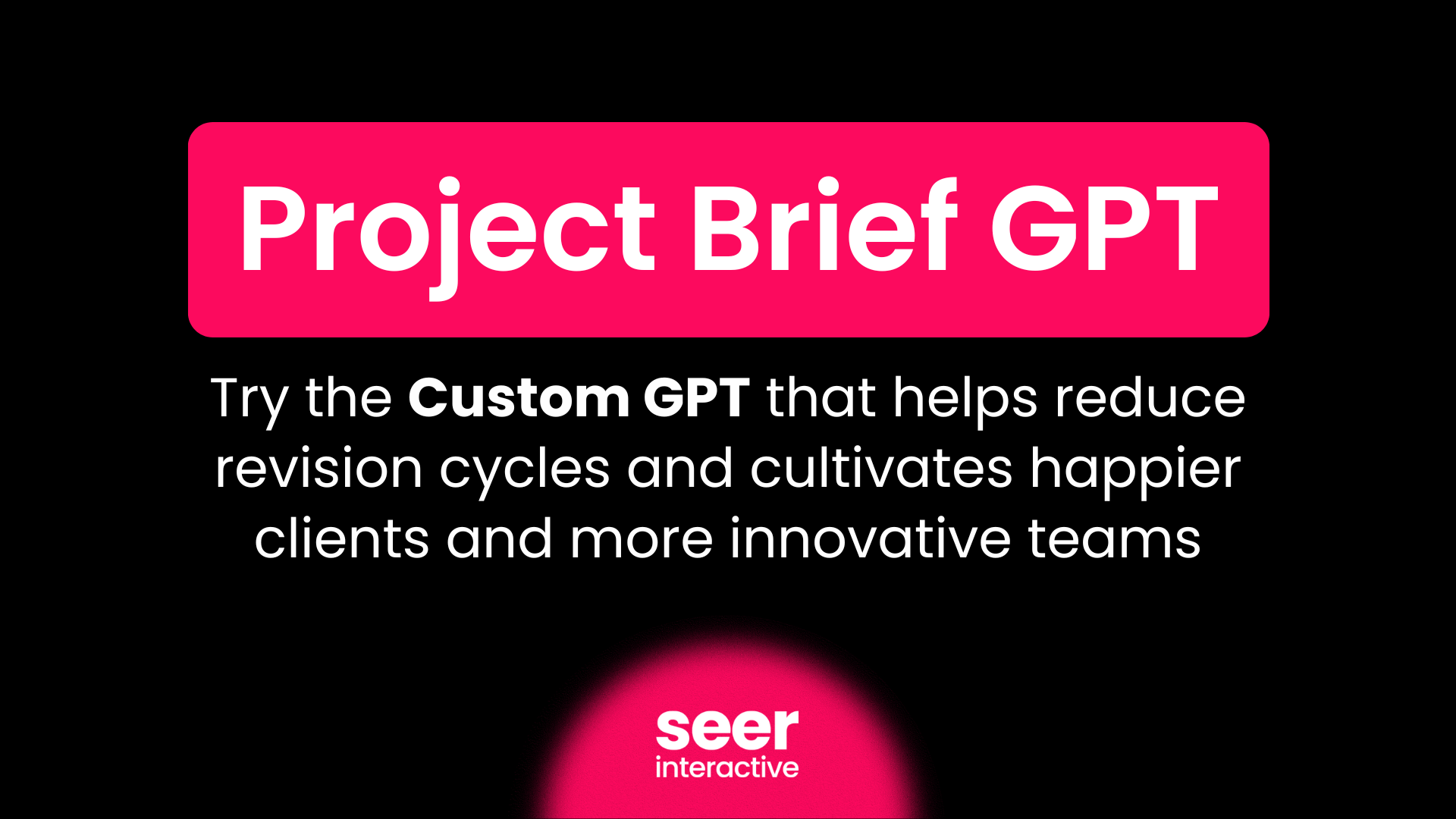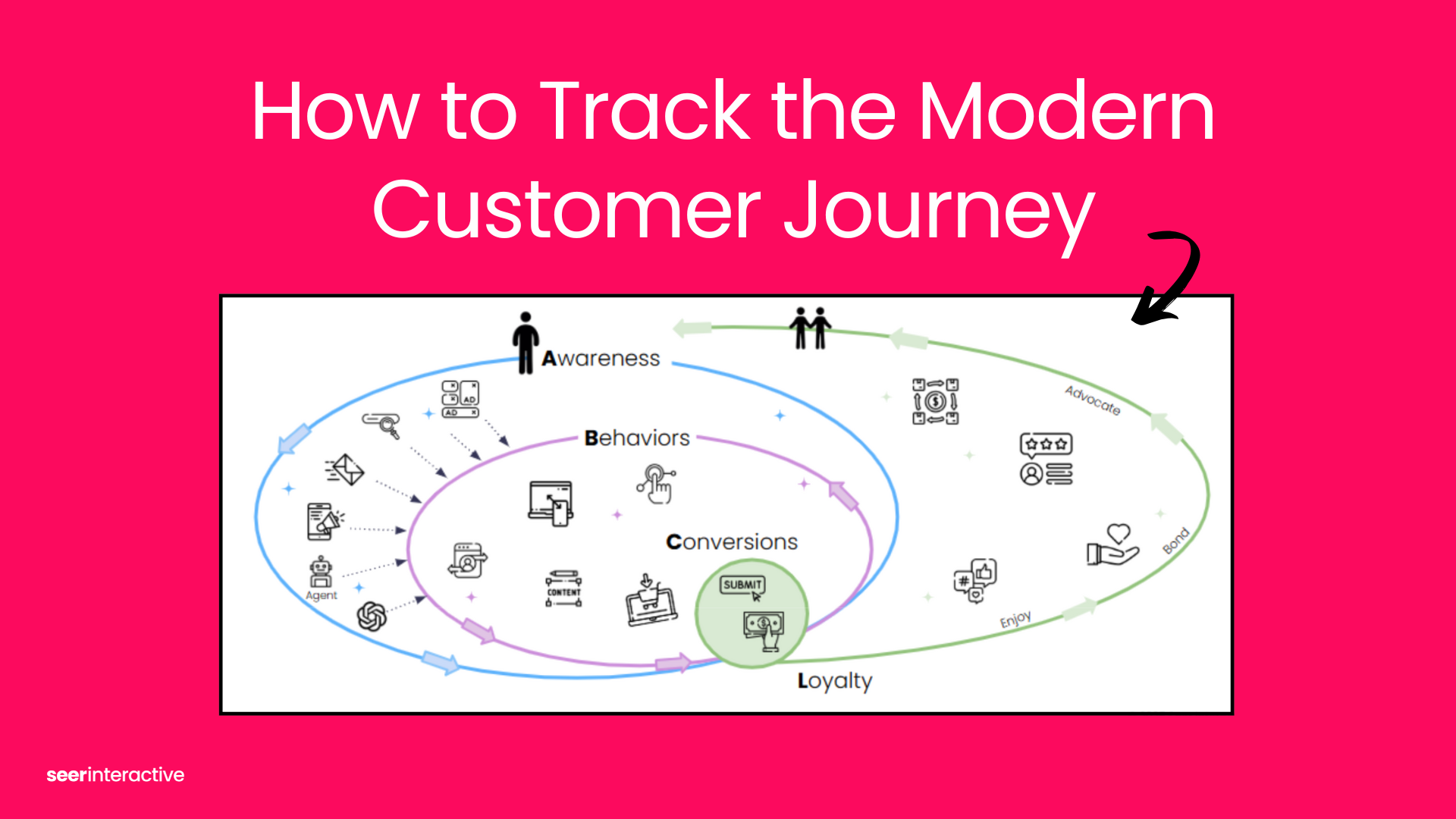At MAICON 2024, some of the best industry leaders gave talks about generative AI. They continuously emphasized the idea that AI is longer a concept of the future; it's a significant force reshaping the marketing industry today. Companies are already incorporating AI into strategy, customer experiences, and business models. Here are top insights from the conference, and the implications for marketers and agencies.

1. The Future of AI in Marketing
The Road to AGI
Paul Roetzer, in his session "The Road to AGI," presented a timeline for AI advancements:
- 2024-2025: Advancements in Large Language Models (LLMs) with multimodal capabilities like GPT-5 and Gemini 2.
- 2025-2026: Multimodal AI explosion. Frontier models become 10x-100x more powerful. Smaller, faster models enable widespread applications on devices, including mobile.
- 2025-2027: AI agents become reliable in taking actions. We see an explosion in AI agents capable of executing tasks.
- 2028-2030: Emergence of Artificial General Intelligence (AGI). New scientific discoveries become possible. Businesses reset across industries, with small teams creating billion-dollar enterprises. AI agent clusters run largely autonomous enterprises.
Defining AGI
Paul believes AGI means AI that is smarter than the average person across various tasks. He emphasizes two measures to evaluate AI:
- Performance: How well AI performs specific tasks. For instance, Grammarly outperforms the average person in grammar correction.
- Generality: The ability of AI to perform across diverse tasks. True generality hasn't been achieved yet at a level exceeding the average human.
He underscores, "It is not whether they are better than the best human, it is whether they are better than the human who would otherwise do the job."
Implications for Marketers
- Consumer Behavior Shifts: AI agents change how consumers interact with brands, necessitating new engagement strategies.
- Task Automation: Routine marketing tasks become automated, prompting marketers to focus on strategic and creative work.
- Data and Distribution: Ownership of data and distribution channels becomes more critical as AI leverages vast datasets.
What Remains Uniquely Human?
Traits like common sense, consciousness, curiosity, and empathy remain uniquely human. Marketers must leverage these attributes to differentiate themselves in an AI-driven environment.
Action Steps
- Accelerate AI Literacy
- Invest in education and training to build a foundational understanding of AI technologies. Utilize resources like MultiOn AI to experiment with AI agents.
- Assess AI's Impact
- Use tools like Paul's custom GPTs to identify tasks susceptible to automation:
- JobsGPT by SmarterX.ai: Identify tasks within jobs.
- Campaigns GPT by SmarterX.ai: Identify bundled jobs within campaigns.
- Problems GPT: Identify business problems.
- Use tools like Paul's custom GPTs to identify tasks susceptible to automation:
2. Strategies for Successful AI Adoption
AI Adoption Framework
Lisa Gately from Forrester Research presented the GenAI Marketing Adoption Framework:
- Establish Adoption as the Objective
- Define clear goals for integrating AI into marketing workflows.
- Secure executive sponsorship, particularly from the Chief Marketing Officer.
- Identify anticipated outcomes, such as improved personalization and accelerated time-to-market.
- Invest in a GenAI Task Force
- Create a dedicated team to expand AI knowledge and expertise.
- Encourage experimentation and embrace adaptability.
- Tap into enthusiastic team members to harness expertise.
- Create a Playbook for Responsible Execution
- Develop repeatable processes and procedures.
- Institutionalize AI training programs.
- Build partnerships with AI providers.
- Promote best practices for AI use.
Overcoming Adoption Barriers
-
Shift Mindset from Efficiency to Performance Gains
- Move beyond focusing solely on efficiency.
- Leverage AI for performance improvements and innovation.
-
Promote Teamwide AI Literacy
- Encourage understanding of AI across all team members.
- Ensure cohesive implementation.
-
Responsible Use of AI
- Establish governance frameworks.
- Manage ethical considerations, data privacy, and risk management.
-
Embrace Adaptability and Experimentation
- Foster a culture open to change.
- Encourage continuous learning.
Measuring AI Outcomes
Marketers are using various metrics to measure AI outcomes:
- Productivity gains
- Revenue impact
- Cost savings
- Customer satisfaction scores
- Employee satisfaction scores
Utilize tools like Forrester's Artificial Intelligence Quotient (AIQ) Survey to assess team readiness and track progress.
3. Leveraging AI-Powered Automations
Keith Moehring demonstrated how to create AI-powered automations using tools like Make.com. Automations can enhance efficiency and provide insights into how teams use AI tools.

Key Use Cases
- SEO Analysis
- Automate reports using data from tools like Google Search Console.
- Time-based triggers can pull data regularly and generate insights.
- Lead Follow-Ups
- Automate the creation of executive summaries for new leads.
- Ensure timely and informed follow-ups by sending summaries to the appropriate team members.
- Social Media Thought Leadership
- Automate content extraction and social post creation.
- Maintain a consistent online presence by scheduling posts.
Action Steps
- Identify Repetitive Tasks
Look for time-consuming tasks that could benefit from automation.
- Choose Appropriate Tools
Select tools that fit your processes and objectives, such as Make.com, Zapier, or IFTTT.
- Implement and Monitor
Start with small automations, then continuously monitor and refine them for optimal performance.
Resources
Keith shared Make.com blueprints for each use case, allowing marketers to replicate these automations.
4. The Importance of Cultural Intelligence in AI Adoption
Andrew Au emphasized that "Artificial intelligence won't change your business—cultural intelligence will." He cited a Harvard Business School study showing that 91% of change programs fail, primarily due to human factors:
- Poor Communication (62%)
- Insufficient Leadership Support
- Organizational Politics
- Lack of Understanding of Purpose of Change
- Lack of User Buy-In
- Lack of Collaboration
Key Takeaways
- Effective Communication and Leadership
Leaders must actively support and participate in AI initiatives. Clear communication about AI's role and impact is vital.
- Onboarding AI Partners
Treat AI tools as team members. Properly introduce and align them with your organization's culture and objectives.
- Promote a Culture of Experimentation
Allow teams to explore AI applications without fear of failure. Recognize both successes and valuable lessons from attempts.
5. AI Literacy and Training
Jessica Hreha from Jasper highlighted the importance of AI literacy in successful adoption. Managers with more successful AI integration:
-
Use the Technology Themselves
- Leaders should model behavior change.
- Actively engage with AI tools.
-
Care About the Team’s Development
- Invest in upskilling team members.
- Enable them to use AI effectively.
-
Believe in the ‘Why’ Behind AI
- Communicate the purpose of AI adoption.
- Clearly explain the benefits to the team.
She emphasized, "For every $1 spent on technology and tools, invest $5 in change management."
6. Measuring AI Outcomes
Forrester Research data showed that marketers are using various metrics to measure AI outcomes, reinforcing the importance of establishing clear Key Performance Indicators (KPIs):
- Productivity Gains
- Revenue Impact
- Cost Savings
- Customer Satisfaction Scores
- Employee Satisfaction Scores
Action Steps
- Define Metrics
Establish what success looks like for your AI initiatives.
- Use Surveys and Tools
Employ tools like the AIQ Survey to track progress and identify areas for improvement.
7. The Role of AI in Customer Experience

Shawn Goodin presented a Customer Experience (CX) Maturity Model:
- Audience Management: Mass → Segmented → 1:1
- Channel Management: Single → Multi → Omni
- Intelligence Management: Manual → Automated → Predictive
Key Insights
- Omni-Channel Experience
Moving beyond multi-channel to an integrated omni-channel approach provides a fluid customer journey.
- Predictive Intelligence
Utilizing AI to anticipate customer needs and behaviors enhances personalization and engagement.
8. Adapting Business Models in the AI Era

The Fifth Industrial Revolution
Mike Walsh, author of "Algorithmic Leader," discussed the impact of AI on traditional business models. He identified three key transformations:
- Products to Platforms
- Example: Tesla evolving from a car manufacturer to a technology platform, offering updates over Wi-Fi and expanding into insurance.
- Transactions to Experiences
- Entertainment: Spotify shifting from selling albums to providing an algorithmic listening experience.
- Transportation: Uber preparing consumers for subscription-based automated transportation.
- Food & Beverage: Starbucks using rewards and customization to focus on experience over price.
- Apps to Agents
- Example: Dating app "Snack" uses AI agents to match and autonomously interview potential dates.
Implications
- Competitive Edge
Companies leveraging AI effectively will outpace traditional businesses.
- Organizational Adaptation
Embracing AI requires changes in structure, culture, and strategy.
- Scope of Possibilities
AI opens up new sectors and opportunities, such as the space economy.
9. Artificial Intelligence Quotient (AIQ) Survey

Forrester also presented on AI readiness and AIQ consisting of:
-
AI Understanding
- Assesses general knowledge about AI technologies and applications.
-
Hard Skills & Training
- Evaluates technical skills and formal AI education.
-
Soft Skills & Inclinations
- Measures confidence levels and motivations for using AI.
-
Ethics, Risks, and Privacy Awareness
- Gauges understanding of AI ethics and data handling practices.
- Use a Third Party
To ensure unbiased responses, consider an external agency.
- Compare Leadership and Employee Results
Identify gaps in perception or readiness to address them effectively.
11. Custom Language Models (CLMs)
A session on CLMs provided insights on creating secure, customized AI models. Some stand-out tools for building your own Custom Language Model were:
- Local Models
- Base Models: Explore options on reddit.com/r/localLLaMA for local models.
- Fine-Tuned Models: Use tools like Unsloth.ai to fine-tune models with your own data.
- External Model Security
- LLM Guard: LLM-Guard checks data compliance before sending it to external LLMs via API.
- Interaction Layer
- Chainlit: Use Chainlit for chat interfaces, providing examples for implementation.
12. Establishing an AI Council
Several speakers emphasized the importance of forming an AI Council to guide AI initiatives:
Framework
- Purpose
- Drive AI adoption across the organization.
- Ensure responsible and ethical use of AI.
- Align AI initiatives with business goals.
- Composition
- Cross-functional team including IT, legal, marketing, operations, and executive leadership.
- Mix of technical experts and business strategists.
- Key Responsibilities
- Develop and oversee AI strategy.
- Set AI governance policies.
- Prioritize AI projects.
- Monitor AI performance and ROI.
- Facilitate AI education and training.
- Meeting Cadence
- Monthly for progress updates and project approvals.
- Quarterly for strategy review and adjustment.
- Success Metrics
- AI adoption rate across departments.
- ROI of AI projects.
- Employee AI literacy scores.
- Number of successful AI use cases implemented.
13. Addressing AI Adoption Challenges
Common challenges and proposed solutions from various presentations:
- Lack of AI Literacy
- Solution: Implement comprehensive AI training programs; make AI a frequent topic in team meetings.
- Resistance to Change
- Solution: Communicate the "why" behind AI adoption; emphasize professional development opportunities.
- Data Quality and Privacy Concerns
- Solution: Implement robust data governance policies; invest in secure AI infrastructure.
- Difficulty in Measuring AI ROI
- Solution: Establish clear KPIs for AI projects; use tools like the AIQ survey to track progress.
- Ethical Concerns
- Solution: Develop clear AI ethics guidelines; include ethics training in AI literacy programs.
- Integration with Existing Systems
- Solution: Adopt an AI patchwork approach for flexible integration; start with small, high-impact projects.
- Keeping Up with Rapid AI Advancements
- Solution: Establish an AI Council to stay informed; allocate budget for continuous learning and tool evaluation.
- Siloed AI Initiatives
- Solution: Implement cross-functional AI projects; use the AI Council to coordinate efforts across departments.
An AI Action Plan
Reflecting on the themes from MAICON, it's clear that AI is a significant force reshaping every facet of marketing. AI is advancing advancements proactive adaptation. Here is a seven-step action plan to guide your path:
-
Accelerate AI Literacy
- Invest in educating yourself and your team about AI fundamentals.
- Understand AI applications to stay ahead in a rapidly changing environment.
-
Launch Near-Term Pilots
- Start small projects to gain practical experience.
- Demonstrate AI’s value within your organization.
-
Document Prompts and Processes
- Keep detailed records of AI interactions.
- Refine and scale your efforts effectively.
-
Establish an AI Council
- Form a dedicated group to oversee AI initiatives.
- Ensure governance and strategy align with business goals.
-
Conduct Impact and Exposure Assessments
- Evaluate how AI affects your business operations, employees, and customers.
- Mitigate risks and maximize benefits.
-
Build an AI Plan
- Develop a strategic plan outlining your long-term AI objectives.
- Set milestones and allocate resources needed to achieve them.
-
Leverage What Remains Uniquely Human
- Focus on creativity, empathy, and strategic thinking.
- Enhance the human touch in your offerings.
Final Thoughts
The future is not about AI replacing marketers but about marketers who leverage AI outperforming those who don't. By implementing this action plan—accelerating literacy, launching pilots, documenting processes, establishing councils, assessing impact, building plans, and embracing our humanity—we position ourselves and our organizations for success in this new era.
As Paul Roetzer poignantly asked, "When does your life and career noticeably change to the point where you will look back and think of how things were before and after?" The time to adapt AI is now!


